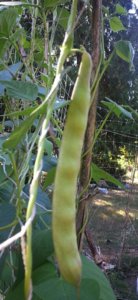- Thread starter
- #461
Blue-Jay
Garden Master
- Joined
- Jan 12, 2013
- Messages
- 3,545
- Reaction score
- 11,344
- Points
- 333
- Location
- Woodstock, Illinois Zone 5
I wish the northern U.S. as far of any area where the JB's live would have just one super cold winter and freeze the ground so deep that it would wipe out all the larvae. Don't suppose that's going to happen. They actually have never killed any of my bean plants, but they sure do look like hell by the time the JB's are done for the season.

